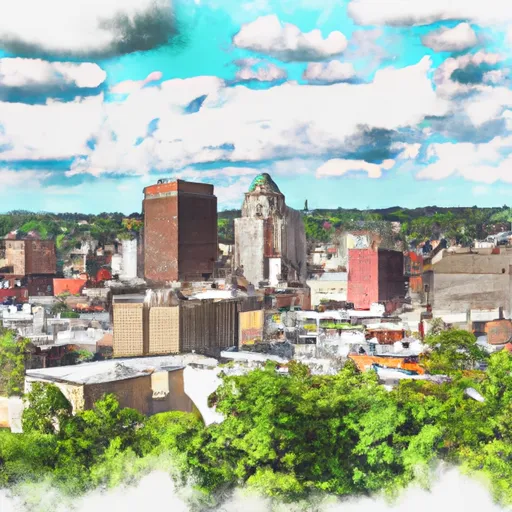°F
°F
mph
Windspeed
%
Humidity











Youngstown, Ohio is located in the northeastern part of the state, near the Pennsylvania border. The city experiences a humid continental climate, characterized by hot summers and cold winters. Summers are typically warm with average temperatures ranging from the mid-70s to low 80s Fahrenheit, while winters are cold with temperatures dropping to the 20s and 30s.
Hydrology constituents in Youngstown are primarily influenced by the Mahoning River, which flows through the city. The river provides a water source for recreational activities like fishing, boating, and kayaking. Additionally, there are several lakes and reservoirs in the region, including Lake Milton and Berlin Lake, offering opportunities for swimming and water sports.
As for outdoor recreation, Youngstown offers various options. Mill Creek Park, known as the "Green Cathedral," is a popular destination with numerous hiking and biking trails, picnic areas, and gardens. Golf enthusiasts can enjoy several golf courses in the area, such as Mill Creek Golf Course and Avalon Lakes Golf Course. In the winter, residents and visitors can go skiing or snowboarding at nearby resorts like Boston Mills and Brandywine or enjoy ice skating at the Youngstown Ice Arena.
Weather Forecast
Youngstown receives approximately 993mm of rain per year, with humidity levels near 82% and air temperatures averaging around 10°C. Youngstown has a plant hardyness factor of 6, meaning plants and agriculture in this region thrive during a short period during spring and early summer. Most plants will die off during the colder winter months.
Regional Streamflow Levels
5
Cubic Feet Per Second
19
Cubic Feet Per Second
26,300
Cubic Feet Per Second
63
Cubic Feet Per Second
Nearby Camping
| Camping Area | Reservations | Toilets | Showers |
|---|---|---|---|
| Tomlinson Run State Park | |||
| Jamestown - Pymatuning State Park | |||
| Mosquito Lake State Park | |||
| Village Green | |||
| Linesville - Pymatuning State Park | |||
| Tuttle - Pymatuning State Park |



